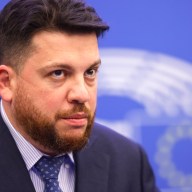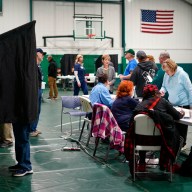WASHINGTON – The Obama administration faced growing skepticism from Congress on Tuesday over the prospect of more U.S. troops in Afghanistan as White House officials intensified an internal debate over any new buildup.
Back from a month in their home districts, House and Senate lawmakers said they wanted to see strong evidence from the administration and military officials that ordering thousands more troops to the war-torn nation would dislodge insurgents from safe havens in Afghanistan and neighbouring Pakistan.
“We’ll want to see a plan, a plan that members conclude can be successful,” House Majority Leader Steny Hoyer, a Democrat like Obama, told reporters.
Sen. Susan Collins, a moderate Republican on the Senate Armed Services Committee, said it’s far from clear that the U.S. military mission in Afghanistan can succeed, “despite the enormous bravery of our troops and talent of military leaders.”
“I just don’t know if this is doable,” Collins said in an interview. “I don’t know that we can achieve the goal of a stable, secure Afghanistan that is freed from the Taliban and is no longer a safe haven for al-Qaida.”
She added: “Afghanistan is not called the graveyard of empires for nothing.”
The building congressional caution comes amid what several senior Obama administration officials described as a rigorous internal debate inside the White House over whether sending more troops can clear Afghanistan of violent extremists and stabilize Pakistan.
Fifty-one American troops died in Afghanistan in August, making it the bloodiest month for the U.S. since the 2001 U.S.-led invasion that toppled the ruling Taliban.
White House spokesman Robert Gibbs said Tuesday that President Barack Obama is not expecting a request for additional forces from the top U.S. and NATO commander in Afghanistan, Army Gen. Stanley McChrystal, for several more weeks.
Gibbs described “a number of factors” that will sway Obama’s final decision, acknowledging that dwindling public support for the war is one of several key focuses.
“I think he will take into account the degree to which additional resources can be borne, not just by the public but also by those who are providing the resources,” Gibbs said. “Obviously, there’s been a tremendous strain on our military forces over the past several years. That will be taken into account.”
Ranking members of congressional military oversight committees said they expected the Pentagon to brief them this week on McChrystal’s classified assessment of the situation in Afghanistan. McChrystal is believed to have made the case for sending more troops – even without asking for specific numbers.
Earlier this year, Obama ordered 21,000 more troops to Afghanistan, which will bring the total number of U.S. forces there to 68,000 by the end of 2009.
Other senior Democrats, including Senate Armed Services Committee Chairman Carl Levin, recently signalled they would buck Obama if he asks for additional troops.
Hoyer offered a more conciliatory note, saying he believes House Democrats agree that the U.S. “took our eye off the ball in Afghanistan” in 2003 – the argument used to lambaste former President George W. Bush for invading Iraq.
He also described a resurgent Taliban in Afghanistan over the past two years.
“We didn’t finish the job that we set out to do,” Hoyer said. “And as a result, the job has become a lot tougher.”
White House officials are working to enlist congressional support, in part by having lawmakers and staff help draw up a list of about 50 benchmarks that the government wants to use in determining whether U.S. strategy in the region is working.
The list includes watching to see how many future military missions are led by Afghan security forces, instead of U.S. or NATO troops, and how long it takes to deliver resources like soldiers or equipment to Afghanistan after being approved by Washington, one senior administration official said. Some of the benchmarks – mostly those that look at counterterror strategies – are classified.
The list of benchmarks does not include a look at how many troops have died over a period of time, said the official, who spoke on condition of anonymity because he was not authorized to discuss the issue publicly. White House and Capitol Hill officials are expected to complete the list of benchmarks by Sept. 24.
Pentagon officials said Defence Secretary Robert Gates now has the various contributing assessments he requested from the military on the situation in Afghanistan. Along with McChrystal’s assessment, Gates also has reviews on the report from Joint Chiefs Chairman Adm. Mike Mullen and Central Command chief Gen. David Petraeus.
The Obama administration also is grappling with the many allegations of vote fraud in the Aug. 20 Afghan presidential election. State Department spokesman Ian Kelly told reporters the U.S. is not in position to say who might eventually be declared the winner or whether there should be a runoff election between the top two finishers. Afghan officials Tuesday released new returns that give President Hamid Karzai 54 per cent of the vote with nearly all ballots tallied.
Kelly said the most important thing is that the allegations of fraud be addressed in a way that gives ordinary Afghans confidence that the outcome of the voting is legitimate.
–
Associated Press writers Pauline Jelinek and Robert Burns contributed to this report.
















